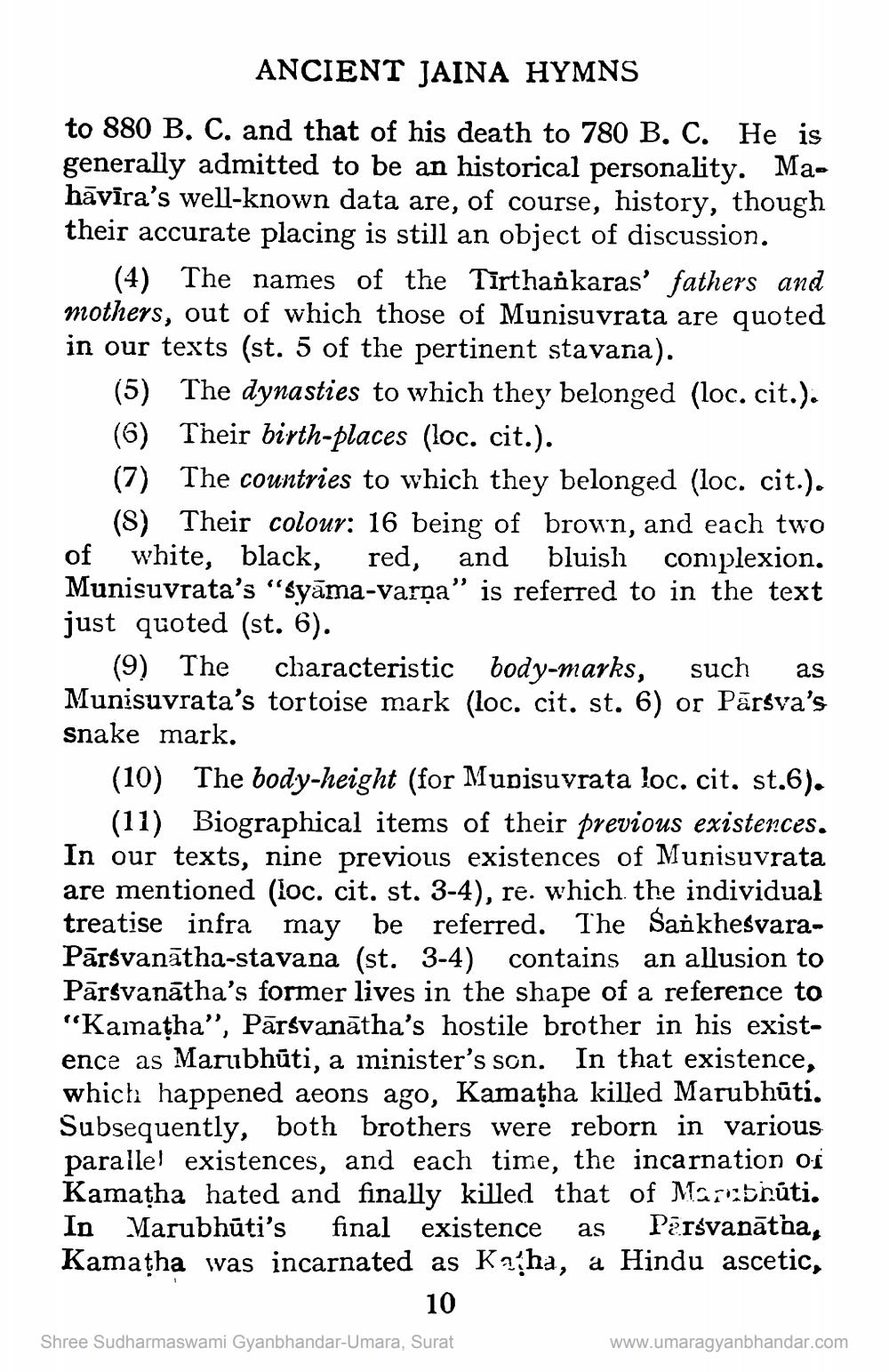________________
ANCIENT JAINA HYMNS
to 880 B. C. and that of his death to 780 B. C. He is generally admitted to be an historical personality. Mahāvīra's well-known data are, of course, history, though their accurate placing is still an object of discussion.
(4) The names of the Tīrthankaras' fathers and mothers, out of which those of Munisuvrata are quoted in our texts (st. 5 of the pertinent stavana).
(5) The dynasties to which they belonged (loc. cit.). (6) Their birth-places (loc. cit.). (7) The countries to which they belonged (loc. cit.).
(8) Their colour: 16 being of brown, and each two of white, black, red, and bluish complexion. Munisuvrata's "Syāma-varņa" is referred to in the text just quoted (st. 6).
(9) The characteristic body-marks, such as Munisuvrata's tortoise mark (loc. cit. st. 6) or Pārsva's snake mark.
(10) The body-height (for Munisuvrata loc. cit. st.6).
(11) Biographical items of their previous existences. In our texts, nine previous existences of Munisuvrata are mentioned (loc. cit. st. 3-4), re. which the individual treatise infra may be referred. The SankhesvaraPārsvanatha-stavana (st. 3-4) contains an allusion to Pārsvanātha's former lives in the shape of a reference to "Kamatha", Pārsvanātha's hostile brother in his existence as Marubhūti, a minister's son. In that existence, which happened aeons ago, Kamatha killed Marubhūti. Subsequently, both brothers were reborn in various parallel existences, and each time, the incarnation of Kamatha hated and finally killed that of Marc brúti. In Marubhūti's final existence as Parsvanātha, Kamatha was incarnated as Kaha, a Hindu ascetic,
10
Shree Sudharmaswami Gyanbhandar-Umara, Surat
www.umaragyanbhandar.com




